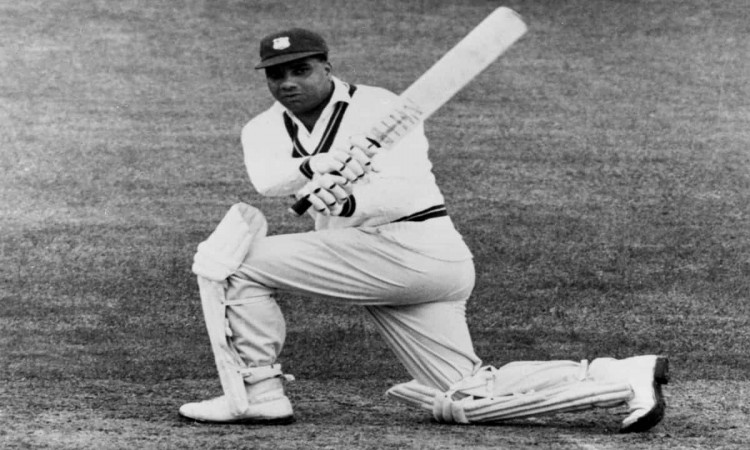Biography Of West Indian Cricketer Clyde Walcott

Sir Clyde Leopold Walcott was a West Indian cricketer and was a member of the "three W's", the other two being Everton Weekes and Frank Worrell. Walcott was the danger man among them.
Powerfully built, standing at 6 feet and 2 inches he was a mighty hitter with aggressive instincts that rendered bowlers impotent by the sheer force of his drive. Having learnt at Harrison College that he could double his chances of playing if he expanded his skills, he became a wicketkeeper. Though his height complicated this he was good enough to serve in this capacity for the West Indies though it later injured his back. He died on 26th August, 2006 after serving as a cricket administrator, and was the first non-English and non-white chairman of the International Cricket Council.
Walcott was born in New Orleans (Bridgetown), St. Michael, Barbados on 17th January 1926. His father was a printing engineer with the Barbados Advocate newspaper. He was educated at Combermere School and from the age of 14, at Harrison College in Barbados. He took up wicket-keeping at Harrison College and also learned to bowl in-swingers.
Walcott first played first-class cricket for Barbados in 1942, as a 16-year-old schoolboy. Walcott was a great stroke-maker, equally adept on the on and off side.At 20, he and schoolmate Worrell made a record 574 runs for the fourth wicket against Trinidad, Walcott scoring 314 not out, the highest total of his career. He was soon displaying his astonishing skill internationally.
He played his first Test in January 1948, which West Indies drew against England at Bridgetown. From a crouched stance, he was particularly strong off the back foot, and quick to cut, drive or pull. Despite his height, Walcott also kept wicket for his country in his first 15 Tests, his versatility enabling to retain his position in the side despite some poor batting performances in his first few matches. By the time a back injury forced him to relinquish the gloves; his batting had improved sufficiently to enable him to keep his place. He became a good slip fielder, and was an occasional fast-medium bowler.
In 1950, his unbeaten 168 in the second innings of the 2nd Test at Lord's helped the team to its first Test victory, and ultimately first series win in England, assisted by the spin bowling of Sonny Ramadhin and Alf Valentine. He scored a century in both innings of two Tests in the series against Australia in 1955, when he became the first batsman to score five centuries in a single Test series, totalling 827 runs from 10 innings. He was dismissed for a duck only once in Tests, lbw to Ray Lindwall in the 1st Test against Australia at Brisbane in 1951.
Massive compensation came on Walcott's home pitches. When India visited in 1952 he hit a 98 and two hundreds and in the following season, in a classic 2-2 series with England, he hammered 220 on his home track and 124 in Trinidad in the fourth Test. Another century in the lost final Test (Garry Sobers's first) took his series tally to 698 at 87.25. And that was still not the peak, for a year later, when Australia visited the Caribbean for the first time; Walcott smashed five awesome hundreds, twice registering two in a Test. This time his aggregate was 827 (82.70) against the unlikely backdrop of a 3-0 series win by Australia.
Following a miserable series in England in 1957 he had the pleasure of escorting Sobers to his Test record score of 365 not out against Pakistan at Kingston and he followed with a century at Georgetown. But after two appearances against England in the sour 1959-60 series his career of 44 Tests ended.
His early retirement from international cricket was attributed by many to his dissatisfaction with West Indian cricket politics relating to the captaincy, but he himself attributed it to disputes over pay. He retired from first-class cricket in 1964. He was awarded the OBE in 1966 for services to cricket in Barbados, Guyana and the West Indies.
He played for Enfield in the Lancashire Leagues in 1951 to 1954, and moved to Georgetown in Guyana (then British Guiana) in 1954, to be the cricket coach for the British Guiana Sugar Producers' Association. From it emerged players like Rohan Kanhai, Basil Butcher, Lance Gibbs, Joe Solomon and Roy Fredericks. He also played first-class cricket for British Guiana, and by 1956 he was captaining the side. In retirement, he returned to Barbados in 1970.
He was President of the Guyana Cricket Board of Control from 1968 to 1970, and then a vice-president of the Barbados Cricket Association. He was chairman of the West Indies selectors from 1973 to 1988, and managed the West Indies teams that won the Cricket World Cup in 1975 and 1979, and also in 1987. He was president of the West Indies Cricket Board from 1988 to 1993. He was awarded the Barbados Gold Crown of Merit in 1991, and became a Knight of St Andrew in the Order of Barbados in 1993.
He ended his career with the ICC. He was an International Cricket Council match referee in three matches in 1992, and became chairman of the International Cricket Council from 1993, the first non-English person and the first black man to hold the position. He was knighted for services to cricket in 1994.
He married Muriel Ashby in 1951. They had two sons together. His brother, Keith Walcott, and a son, Michael Walcott, both played first-class cricket for Barbados.
Other Legends
Latest Cricket News
Cricket Special Today
-
- 13 Jan 2026 11:01
-
- 12 Jan 2026 12:42
-
- 02 Jan 2026 10:14













